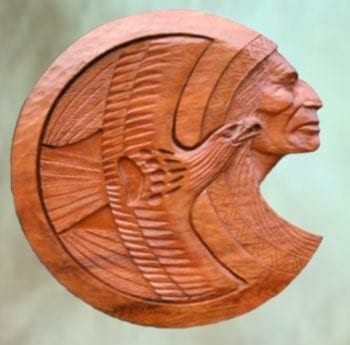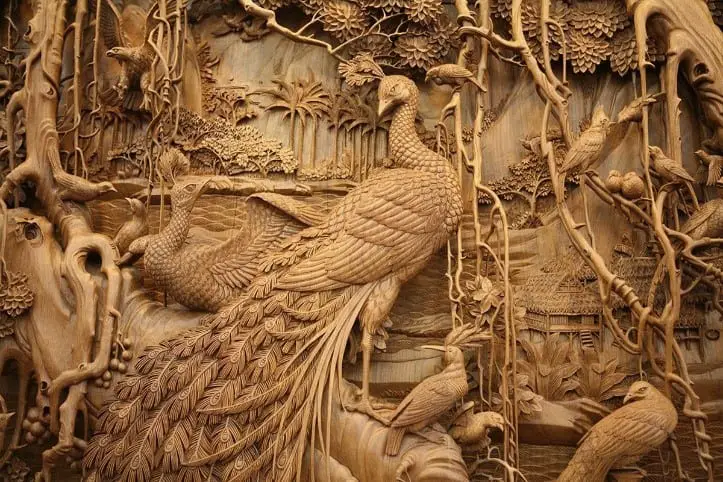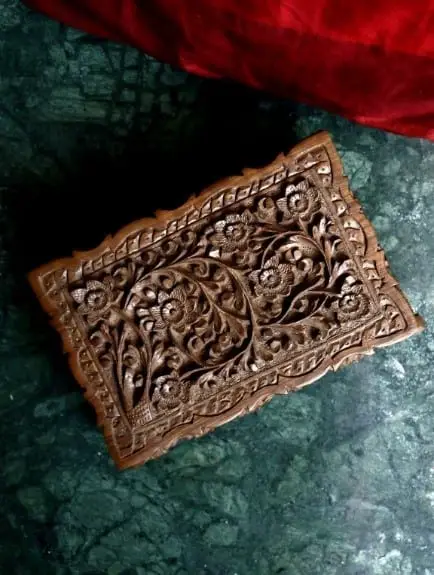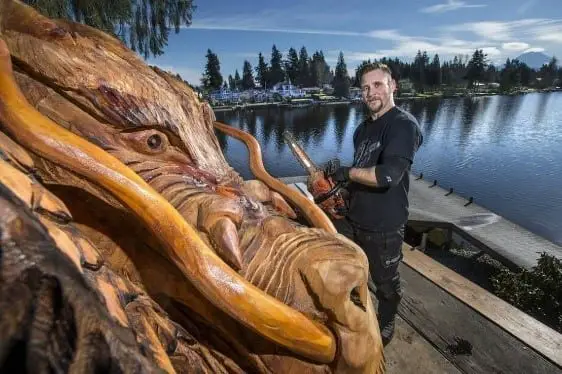Human civilization utilizes wood to build houses, for hunting and fishing, use as kitchen utensils, as musical instruments, weapons, and for entertainment. Wood has many uses and from the ancient times until this modern age, we are using wood for various industries, from domestic or household use to commercial and industrial purposes.
It is nice to know how woodworking emerged, so let’s explore and learn one of the most interesting topics of our culture and tradition, the Native American woodworking.
At a Glance
Are you interested to know why Native American woodworks are always a subject of interest among cultural enthusiasts?
Because of the seacoast utilization and river resources, the Northwest coast has been the home to many Indian nations. The region stretches in Alaska’s Tlingit homelands to Northern California’s Tolowa Homelands.
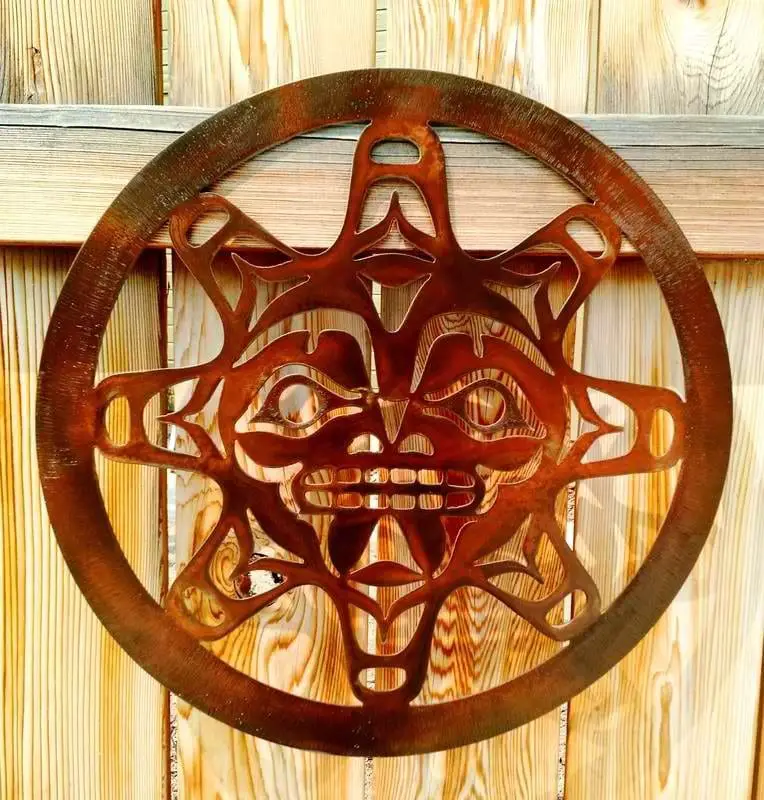
Before the invasion of the Europeans, people inhabited in large houses that were built on beam frames and posts. The most important tree in this region is cedar because of its diverse uses.
The cedar wood was used to fulfill the basic necessities of people and linked to different aspects of Native American culture. These Native Americans developed advanced woodworking techniques and tradition, including bent boxes, household utensils, totem poles, canoes, and houses.
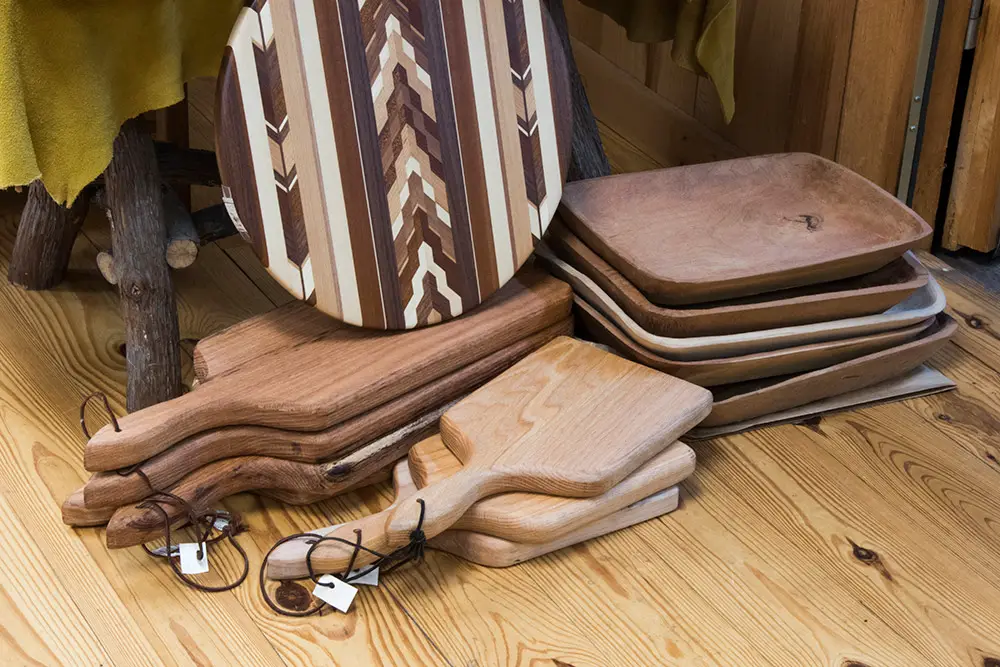
Native Americans have really nailed woodworking with their techniques and wood art masterpieces! Let’s find out how Native Americans lived and practiced woodworking…
Unleashing Ancient Woodworking Practices
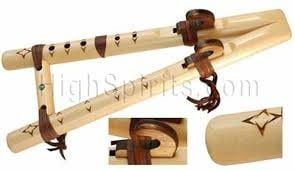
Ancient woodworkers are masters because of their dedication, passion, and artistry. Now, we can see the Native Americans woodworking masterpieces in museums, ranging from wooden utensils, musical instruments, and hunting tools to decorative objects and furniture pieces, as well as canoes, boats, and houses.
Native Americans, like other human civilizations, used any available wood to create different woodworking tools and techniques. The Northern tribes turned hardwoods, such as maple, birch, and elm as bowls, spoons, and other household utensils. Native wood carvers used bone and stone tool to scrape hardwood to form them into different shapes.
Our forefathers created primitive tools from wood, and eventually, ingenious woodworking techniques turned woods into decorative and artistic objects. We are lucky to have power tools that make woodworking a lot easier today, so you could probably imagine the amount of time ancient people devote to create a wooden project.
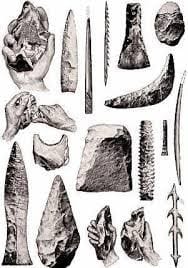
Ancient wood carving is impressive because from primitive tools to the introduction of a steel knife, native men were able to create decorative wooden utensils, like animal effigies. They used chisels, scrapers, gouges, and axes to create major woodworking projects. People helped together to cut down trees and cut them into pieces. Just imagine several groups of men needed to cut down a giant tree!
Indeed, ancient Native American woodworkers were honed by experience. They developed different woodworking techniques such as bending wood to make basket handles, canoe ribs, and snowshoe frames, without breaking the wood.
They made hollowed objects like log mortars to pound corn, dugout canoes, and wooden bowls using the charring technique. As Native Americans mastered their woodworking skills and developed various woodworking techniques, they become better to cultivate the land, hunt for food, and build furniture pieces, buildings, and means of transportation.
Now, it’s time to learn about the woodworking tools Native Americans used…
Native Americans Common Woodworking Tools
Adze
In the Northwest coastal region, ancient tribes created several models of adzes. The elbow adze has a blade inserted into its long wooden handle. On the other hands, a straight adze is an important tool with its blade inserted into an antler’s haft.
Native Americans from the interior parts developed blades that were made of jade and were used in adzes and chisels, and the blades were heat-treated to increase their hardness. These blades were traded to coastal dwellers.
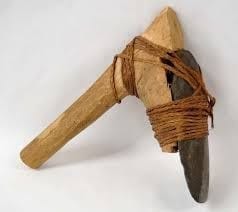
Mauls and Stone Hammers
Native Americans used manual force to split wood and finish it to perfection. Wedges made of bone and antler were used to split cedar wood and turned into planks to build houses and make boxes.
Wedges were pounded using mauls. Eventually, different grades of wedges were developed to split logs into planks. Haul mauls were carved from stone, whereas stone hammers came with wooden handles.
Kerfed boxes
Kerfed boxes are unique wooden boxes which are mostly waterproof and used in cooking. These boxes are created by scoring and bending a single board to form the sides. It is fitted with just a single side seam sewn with spruce root and the bottom part of the box is fitted and sewn together.
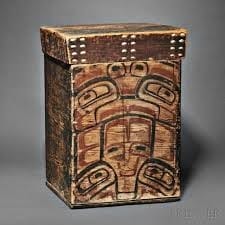
Stone Celts
One of the most common woodworking tools used by Native Americans is stone celts for artistic and day-to-day uses.
Native American Wood and Stone Carvings
Woodcarving represents the strong ties between Native American culture and nature, which is vital to a large majority of ancient tribes.
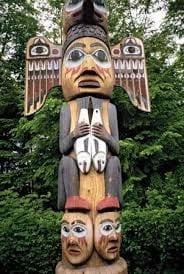
They carved totem poles which were placed on their lands as a tribute to tribal chiefs, animal spirits, and the “Great Spirit”. They believed that these wood carvings protected them from enemy tribes and animal spirits. Also, some carved totem poles were used to identify or represent specific families.
While many tribes started sculpting with the use of wood, people in the southwest of North America carved in stone. They made stone carvings to represent humans, animals, and other essential aspects of their life.
For example, a tribal member carves a salmon or any type of fish because it is their main source of food. The Zuni tribe carved “Zuni fetishes” or carvings and sculptures of animals that were used usually in religious ceremonies. Native American tribes believe that these fetishes are powerful, connecting humans and the earth.
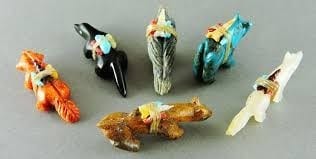
Zuni believed that “Ahlashiwe” or early Zuni carvings were real animals which were turned into stone by their so-called “Sun Father”. That is why carvings are a major part of Zuni culture, wherein each animal served is considered a form of protection.
Zuni wood carvings are so adorable!
On the other hand, the Cherokee tribe was committed and passionate about wood carving. They usually carved practical items like wooden spoons used to prepare meals. They carved wood pipes for economic benefit.
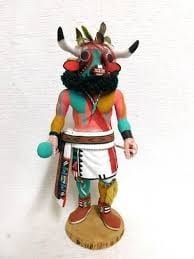
The Hopi tribe carved Katsina dolls as religious icons, which were made out of cottonwood roots. Puebloans formed figurines out of clay and many tribes carved items from ivory, stone, and wood. The beautifully created carvings and sculptures were used for religious worship and entertainment, like storytelling.
Let’s remember the past and witness how Cherokee Indians mastered woodworking…
Reminiscing Cherokee Indian Woodworks
Native Americans have a sophisticated level of woodcraft which spanned for thousands of years. You are probably aware of the importance of wood carvings in the Native American culture.
Hundreds of different Native American tribes have contributed to the immensely to their rich culture and traditions. Early woodcarving was focused on creating household utensils, like spoons, dough trays, and ladles. For instance, “ka-no-na” or corn beater used for processing corn was carved from wood. The Cherokee Indian wood carving managed to keep its original form.

A major tradition in Cherokee Indian sculpture is pipe carving in stone, which provided income throughout the 18th and 19th centuries. You’ll be amazed how the stylized animal life forms and human figurines appear natural on pipes, carrying the beauty and strength of the ancient forms to the modern wood sculpture.
Also, Cherokee Indian wood carving reflects the history that is parallel to its basketry. Wood carving is a famous Cherokee Indian craft and the designs were shaped by White mountain carvers today which invaded the general art world and taught in schools. Their major art form includes wood carving and stone carving. Many Native American tribes have made sculpting and carving foci of art for many centuries.
Today, wood carvings are found in homes and commercial establishments worldwide.
Pacific Northwest Native Indian Arts
When it comes to woodworking, Native Indians use traditional paint colors, black to outline the body and red for secondary elements, such as carving bear or raven. Black and red were painted on wood prior to carving on a plane surface and tertiary colors, such as blue-green, white or yellow painted after carving. Some wood carvings don’t use colors for a natural look.

For a characteristic Northwest look, different shapes were used. The most dominant shape is an ovoid or rounded rectangle to form a convex. A formline or the mainline outlines the body (legs, arms, wings, etc.) of a subject, person or animal.
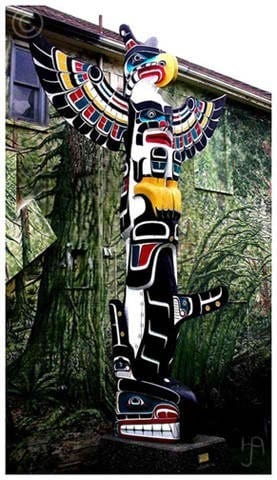
U-forms are usually used to contour the body such as ears or tails or as space fillers. Animal subjects are vital to the Native Indian arts, wherein the eyes usually consist of circular or ovoid eyeball shape. Some artists and woodcarvers also add eyebrows for both human and animal subjects.
Bottom Line
Native American woodworking represents a small portion of human civilization, but the influence is tremendously widespread. Their woodworks were made sophisticated as they learned new woodworking skills and developed woodworking tools, helping their tribes surpass life’s everyday challenges.

Native Americans were able to sustain their rich culture and tradition when it comes to wood carving which is greatly appreciated up to this day. Native Americans truly deserve a round of applause for their big contribution to the woodworking industry.
